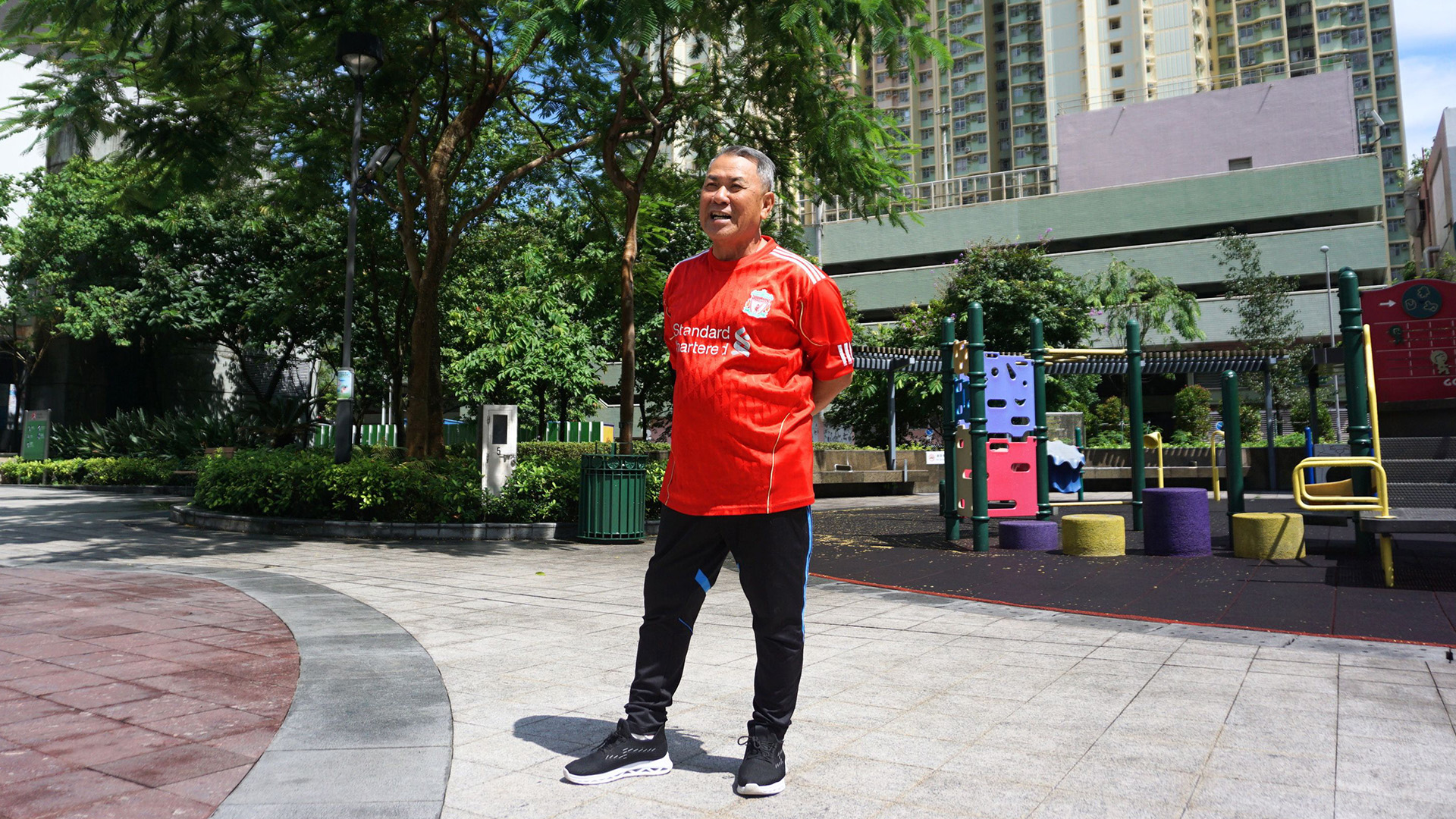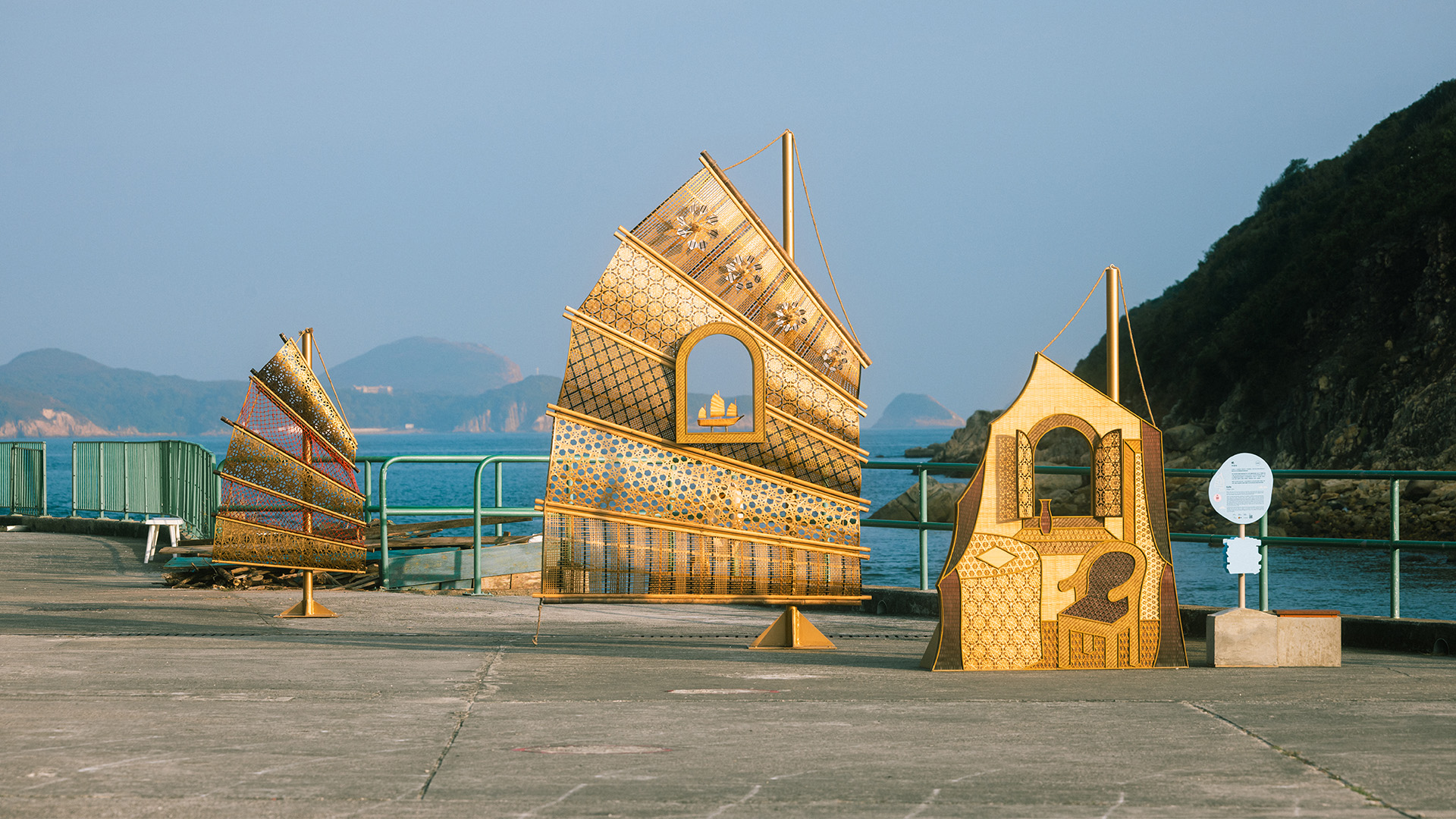
Nestled on the shores by the Hung Shing Temple on Kau Sai Chau, three sails stand majestically — the head sail at the front, the imposing big sail in the middle, and the third sail at the back. Tourists strolling by are drawn to this striking installation, with a curious window set into the centre of the head sail. Through this window, the view stretches from the land out to the sea, transporting onlookers back to a time when village elders would peer anxiously across the water, waiting for their kin to return laden with the day’s catch.
“Although the artwork is put on the shore, it seems as though it’s sailing right on the ocean viewing from afar!” exclaims Ma Shu Kan, a native of Kau Sai Village and one of the original boat people who helped breathe life into this artwork. Each visit stirs deep emotions within him, evoking memories of a childhood marked by both hardship and happiness.
“In our early years, life was on the water,” Ma Shu Kan, now in his seventies, reminisces. “Each family owned a boat, flanked by several sampans. Our homes floated on the waves — grandfather, father, and uncles together.” His fondest memories are of fishing alongside his grandfather. As a teenager, while others moved ashore to the burgeoning Kau Sai Village, he stayed at sea, continuing the family tradition until other opportunities beckoned in his twenties. “While the youngsters and the elderly stayed on land, we, the slightly older ones, lived on boats, venturing out with the adults.”
Decades later, the details of those fishing expeditions are still vivid in his mind. They would set out at dusk, anchor by nightfall, and ignite kerosene lamps that dazzled the dark waters, attracting fish by the shoal. “By 3 am, we’d pull in catches sometimes weighing up to eight or ten picul,” he recalls. Unsold fish were not wasted; instead, they were transported to markets far afield like Aberdeen, Ma Wan, or Peng Chau, a journey of three hours by the slow boats of yesteryear. “While the adults took the main boat to the market, we kids would row the sampans back with the aunties, and if not too weary, we’d scamper ashore for school.”
“It was arduous, perilous work,” he admits. Life at sea was a daily gamble with nature’s fickle moods — a sudden storm could mean disaster. “Braving the elements was part of our livelihood; it was a risk we had to accept.” Each voyage was a brush with mortality, making safe return a cause for gratitude.
“Yet, those days felt liberating and joyful,” he reflects with a smile. Now living away from Kau Sai, Ma occasionally returns to gather sea snails and reconnect with family. “Growing up here, everyone knew everyone. The bonds forged in childhood endure, rooted deep within us.”

Last year, these shared memories caught the attention of artist Inkgo Lam Ka Yu, inspiring the creation of “Sails”. This piece, particularly poignant for Ma Shu Kan, includes a fishing net on the third sail, handwoven by him and Mr. Ho, another villager. Every return to Kau Sai sees him capturing this artwork in photographs, which he eagerly shares with the curatorial team. This heartfelt engagement underscores the Festival’s ethos—that art not only preserves the history of a place but revives and shares its joy anew with its people.
The online registration will be open from 2 Nov (Wed) 10am on a fortnightly basis, for the coming 2-4 weeks upon the system’s update. The registration schedule is as follows:
| Date Open for Registration | Newly Open Dates of the Programmes/Tours* |
|---|---|
| 2 Nov (Wed) | 16 Nov - 30 Nov |
| 16 Nov (Wed) | 1 Dec - 14 Dec |
| 30 Nov (Wed) | 15 Dec - 28 Dec |
| 14 Dec (Wed) | 29 Dec - 16 Jan |
| 3 Oct (Thu) | 13 Nov - 12 Jan |